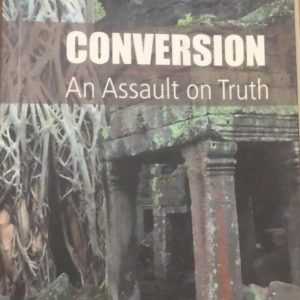Dr K. S. Narayanacharya is one of the tallest cultural doyens of Bharateeya Parampara. A great Vedic scholar, he was well- versed in multiple languages, including Sanskrit, Kannada, Tamil, and English. Many do not know that he was an English professor. He stands unmatched for his insights into the Vedas and Puranas, critical treatises and commentaries in the Srivaishnava Parampara, as well as in our larger tradition. He was among the few who had a deep understanding of modern literature both within India and outside. A wonderful storyteller, he wrote many stories in Kannada magazines on our Itihasa Puranas and made them accessible to the Astikas. He was extremely popular as a Pravachanakara, the traditional discourse maker. He brought together his superlative abilities of perspective, knowledge, rhetoric, and narration to weave a magical experience for his audience that made transcendental paths perceptible to take them on a journey towards Shraddha.
The genius of Acharya was such that he could bring the timeless into the time without reducing the overall essence. Often, when you contemporise Itihasa-Purana narratives, they become a pale version of the original. But Acharya could create a contemporary universe which was at once accessible to the general reader yet left a craving for the beyond. Fruits from the Tapasya of many janmas is how one can minimally describe it. It is our fortune that we were born in a time and place when an Acharya of his stature and ability was active and contributing to the Sanatana flow of Bharatiya Parampara. Indians, especially Kannada-speaking people, should regard themselves as lucky that much of his work is in Kannada.
His ‘Veda Samskriti Parichaya’ will remain that magnum opus from which civilizationalists will get their Amrita for several generations. In this series, Acharya has brought the essence of the Vedas from multiple dimensions and presented them in a contemporary language, idiom, and narrative. It helps Bharateeyas of our times to imagine our culture, thought and civilisation separately and in parallel to the Western civilisation, which has shrouded our thoughts too much. In his work, the Vedic outlook and thought systems have an accessible perspective and purpose that must regain their rightful space. It questions the modern mind, which is swept away by the force of colonialism, liberalism, and modern industry. It equips us with the vocabulary to articulate unsolvable problems of modernity. It places Vedic spirituality in its most exalted place and fires us to think of rebuilding civilisation with Vedic thought as the centre and the very purpose. His deconstruction of the Western criticism of Indian thought and civilisation—modernity in particular—will cleanse us of all the false guilt and inferiority we suffer due to colonialism and modern education.
The clarity, conviction, and compulsion of this perspective flow into all his other work. His Ramayana and Mahabharata series, which has taken the form of multiple books, presents our Itihasa-Purana in the light of Vedic thought. The enormity of what our ancestors achieved in making these lores and the depth of experience that our ancestors passed onto us are evident in his narratives. They touch our hearts, mind, and intelligence at once and pave the way for that single thing that civilisations strive for – eternal wisdom. One such work in Kannada was ‘Śrī kṛṣṇāvatārada koneya gaḷigegaḷu’. This was among his extremely popular works, which made Sanatana Sajjanas take a particular interest in those Parvas of Mahabharata that one usually.
Recently, Astikas of Traditional Kannada Literature have taken a special interest in bringing the best of Kannada literature into English. Acharya himself has translated some of his works into English. We must parlay his works in the contemporary idiom, language, and sensitivity. My friend, Manjula Tekal, has filled a big gap and brought out this book in English. It is a fine recreation of the original. Being a translator of other Kannada books into English, a keen student of Itihasa-Purana herself, with already one novel from the same universe in English, Manjula is best suited for this meritorious job of translating a piece of work from Sri. K. S. Narayanacharya. While reading like an original in English, it recreates the grandeur of the original work and presents it in the contemporary idiom. At the same time, the dhvani of Shraddha, with which all our tales are primarily written, imbues the novel.
The book may be about Srikrishna’s last days and moments. But Srikrishna finds a permanent place in our hearts and minds once you complete this novel. I consider it my honour to place a few words at the feet of the great Acharya as this initial note. Acharya himself made all his translations in the past. I am fortunate to present this translation by Manjula—a first one in that sense. I am sure readers across Bharatavarsha and abroad will find this book extraordinarily interesting and valuable and look at the original Mahabharata with wonder—something that many of us continue to live with for decades.





Ashish Iyer –
What a remarkable book. After finishing this book, it made me weep. This book gives a different dimension altogether. The characters come alive with their trysts, their difficult choices, their compulsions, their inspirations. The philosophy and knowledge gained through the teachings of Krishna always inspires and aspires to know more. It’s a tragic story of Yadava’s internal self conflicts and bringing the unfathomable end of their own golden period. There is very little to be read after the Mahabharata and the fall of the Yadavas. It is clear from this incident that the consequences of karma do not spare anyone, even if it is God. The book often goes in flashback. This book is a very beautiful attempt to understand the behavior of Yadavas and the feelings of Krishna after the Mahabharata war. Another powerful writings by Narayanacharya ji. Thank you Manjula Tekal for translating for this gem.